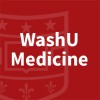
Efficacy and Safety Study of MYOBLOC® in the Treatment of Adult Upper Limb Spasticity
SpasticityCerebrovascular Accident4 morePhase 2/3, randomized, double-blind, placebo-controlled, single-treatment, multicenter trial assessing the efficacy and safety of MYOBLOC for the treatment of upper limb spasticity in adults followed by an open-label extension safety trial.

A Novel Transition Program to Reduce Disability After Stroke
Ischemic StrokeHemorrhagic StrokeThis study evaluates a program designed to help individuals transition home from inpatient rehabilitation following an ischemic or hemorrhagic stroke. Half of the participants will receive a stroke education program while the other half will receive an environmental modifications program.

Efficacy and Safety of Thrombectomy in Stroke With Extended Lesion and Extended Time Window
StrokeAcute3 moreTENSION (Efficacy and safety of ThrombEctomy iN Stroke with extended leSION and extended time window) is a prospective, open label, blinded endpoint (PROBE), European two-arm, randomized, controlled, post-market study to compare the safety and effectiveness of endovascular thrombectomy as compared to best medical care alone in the treatment of acute ischemic stroke patients with extended stroke lesions defined by an Alberta Stroke Program Early CT Score (ASPECTS) score of 3-5 and in an extended time window (up to 12 hours or unknown time of symptom onset). Up to 665 subjects will be randomized. Primary endpoint will be functional outcome assessed by the modified Rankin scale at 90 days post-stroke ("mRS shift analysis"). By this, TENSION will provide evidence of efficacy and safety of thrombectomy in an acute stroke population with uncertain benefit of endovascular stroke treatment.

Treatment Evaluation of Acute Stroke for Using in Regenerative Cell Elements
StrokeAcuteThe primary objectives of this study is to evaluate the efficacy of HLCM051 on functional outcome in subjects with acute ischemic stroke and to evaluate the safety of HLCM051 in subjects with acute ischemic stroke.

Examining How Motor Rehabilitation Promotes Brain Reorganization Following Stroke, an MRI Study...
StrokeHemiparesisConstraint-induced movement therapy (CI therapy) is a highly efficacious treatment for residual motor disability in chronic stroke. Its effectiveness is believed to be due, at least in part, to the therapy's ability to aid the brain in "rewiring itself." For example, CI therapy produces increases in the amount of grey matter (the parts of the brain where neuron cell bodies are most closely clustered) in certain areas of the human brain (Gauthier et al., 2008). The cellular and molecular mechanisms that are responsible for this increase in grey matter volume are not known, however. Thus, it is unclear how the therapy helps brains "rewire" themselves. This study aims to better understand the timecourse and cellular/molecular nature of brain changes during CI therapy. Because there is currently no way to directly measure cellular/molecular changes in the brain noninvasively, this study will infer what is happening on a microstructural level using new MRI techniques (three dimensional pictures of the brain). For example, by charting the timecourse of grey matter changes during CI therapy, and cross-comparing this to what is known about the timecourses of different cellular/molecular processes, the investigators can gain a greater understanding of what cellular processes may be responsible for increases in grey matter. The investigators will gain additional information about which cellular processes are important for rehabilitation-induced improvement by measuring larger-scale changes (e.g., amount of blood flow through different brain areas) that accompany cellular changes. The investigators are hopeful that by better understanding how CI therapy can change the brain, the effectiveness of rehabilitation can be improved upon. For example, insight into the mechanisms of rehabilitation-induced brain change may suggest particular drug targets to increase brain plasticity. This study will help us better understand how the brain repairs itself after injury.

Safety and Usability of the Honda Walking Assist Device (HWA) in the Home Environment
StrokeThe purpose of this study is to verify the safety and validate the usability of the Honda Walk Assist (HWA) device in the home setting versus an exercise program without the device in a gym setting for individuals diagnosed with stroke. The investigators hypothesize that the HWA exoskeleton is a safe and effective device for use by individuals diagnosed with stroke in the home environment.

The Vesalio NeVa Stent Retriever Study for Treatment of Large Vessel Occlusion Strokes
Acute Ischemic StrokeA prospective, open label, single-arm 90-day study designed to assess the safety, performance and efficacy of thrombus removal in subjects presenting with acute ischemic stroke with the NeVa stent retrievers.

An Open-labeled Phase II Study to Evaluate the Efficacy and Safety of GXNPC-1 in Patients With Chronic...
Chronic StrokeThe primary objective of this study is to evaluate the efficacy for subjects with chronic stroke after GXNPC-1 injection.

The Effect of Powered-Knee Exoskeleton Assist on Stair Climbing in Acute CVA
StrokeAcute2 moreHypothesis/Specific Aims: The purpose of this research study is to determine if using an exoskeleton during stair climbing training will result in an improved ability to walk and climb stairs in individuals affected by recent stroke as compared to stair climbing training without an exoskeleton.

Treatment of Acute Ischemic Stroke (ReMEDy2 Trial)
Acute StrokeIschemic Stroke1 moreThis is a Phase 2/3 study evaluating the safety and efficacy of DM199 in treating participants presenting within 24 hours of Acute Ischemic Stroke (AIS) onset for whom fibrinolytics and/or a catheter-based procedure, mechanical thrombectomy (MT), are not medically appropriate or available due to constraints of clot location, comorbidity risks, and/or time from estimated onset of stroke. The double-blinded study will be randomized, placebo controlled at approximately 75 sites.
